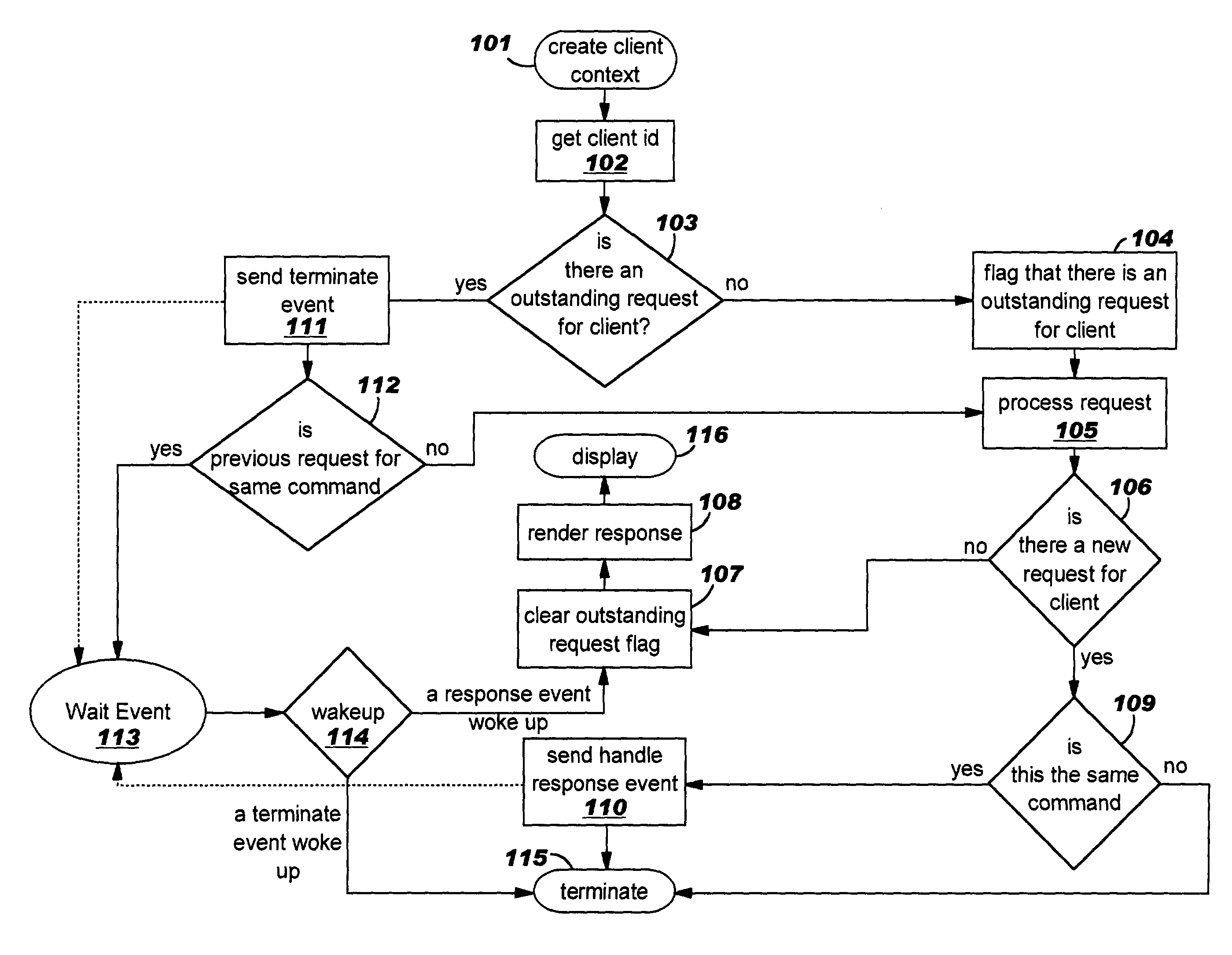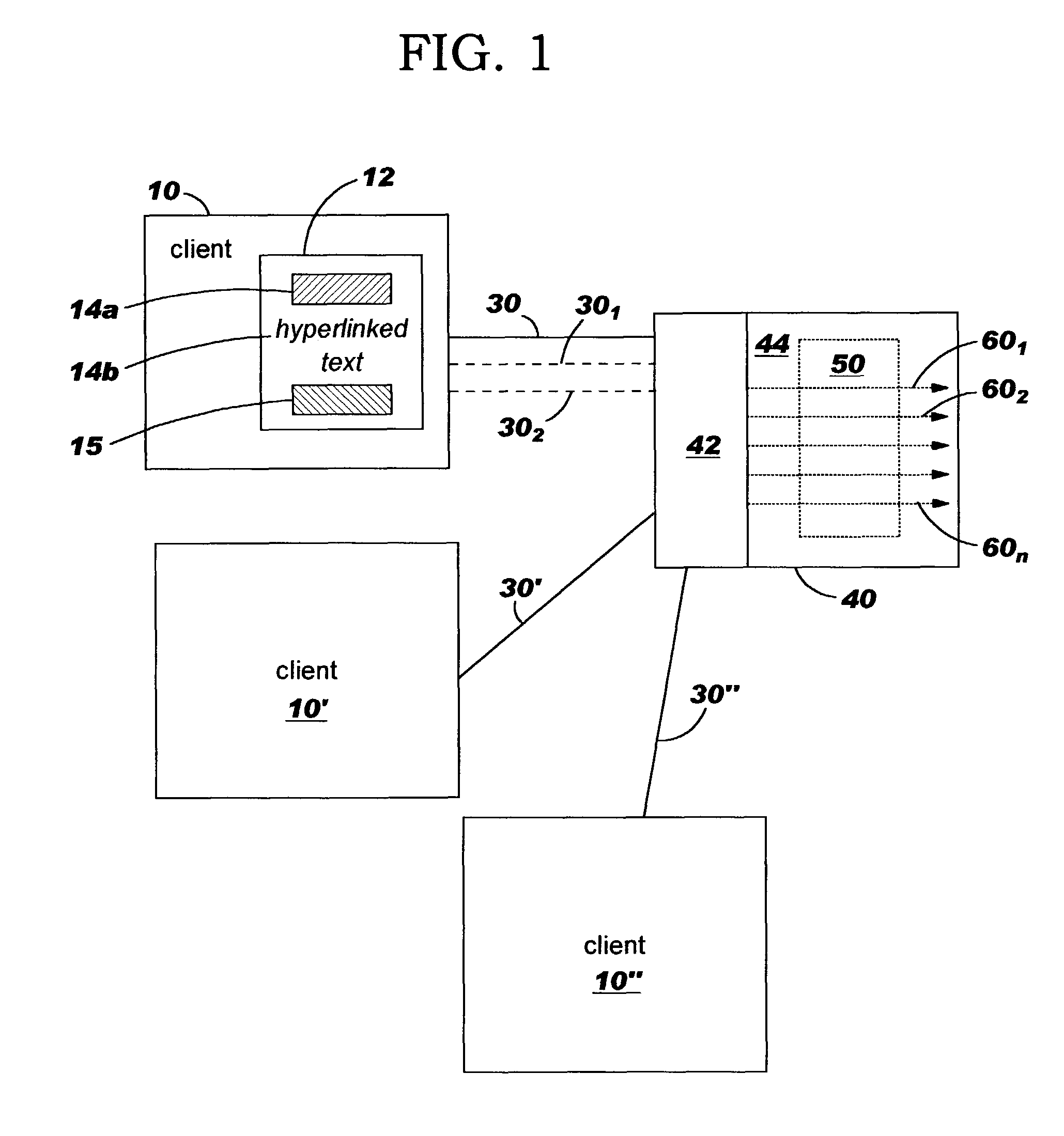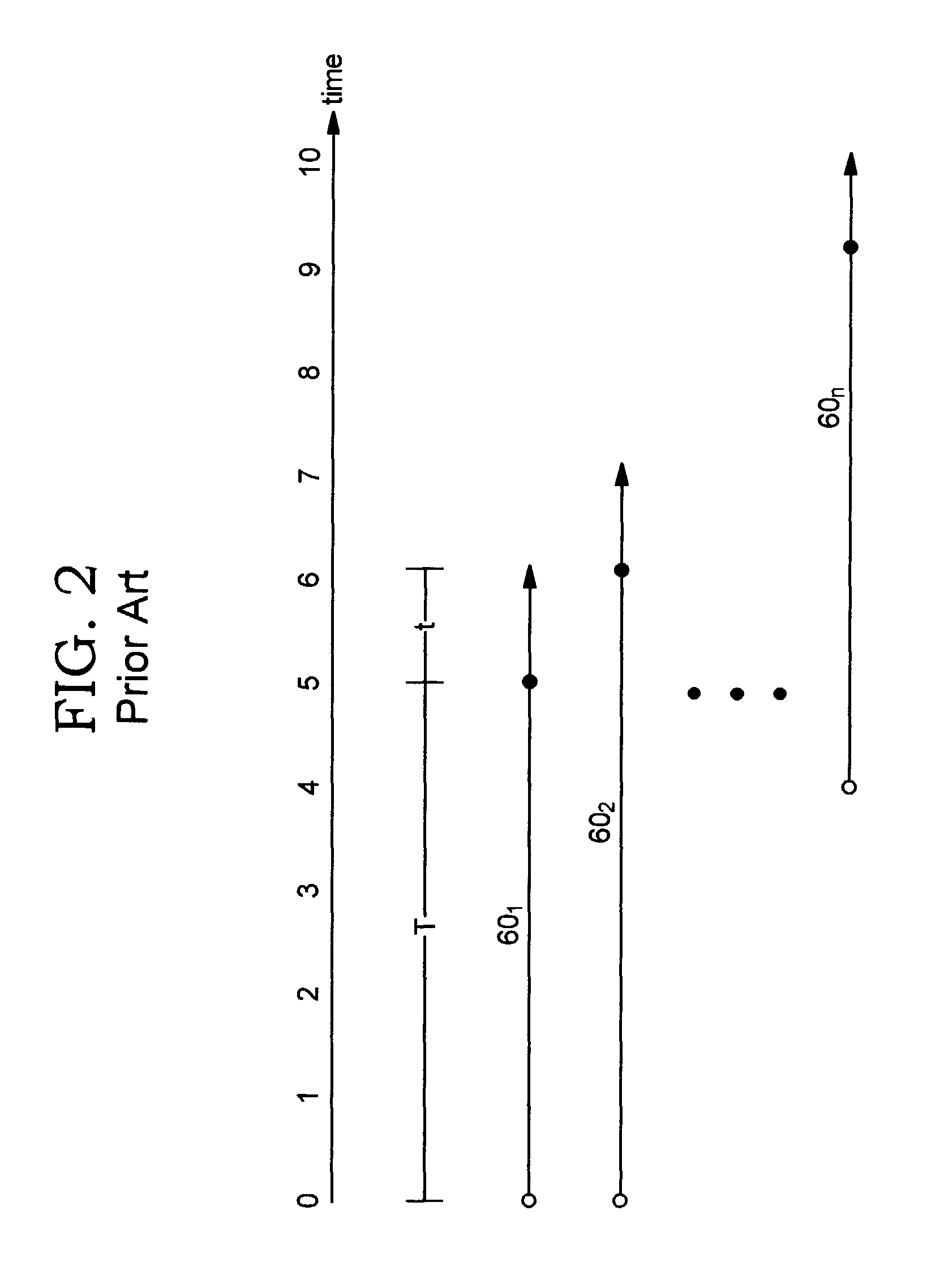Efficient server handling of multiple requests from a web browser
- Summary
- Abstract
- Description
- Claims
- Application Information
AI Technical Summary
Benefits of technology
Problems solved by technology
Method used
Image
Examples
Embodiment Construction
[0058]Referring to FIG. 1, a block diagram illustrates an example of the client-server architecture underlying the handling of multiple requests from a client according to the preferred embodiment. The client 10 typically runs on a user's personal computer and displays to the user a web page 12 which comprises information delivered from the web application server 40 in response to a client request (client 10 is typically a web browser or similar computer program product that establishes a connection to a web application server for requesting and receiving information from the web application server). The web application server 40 is a computer program product which receives and manages requests and responses to and from the client 10, and handles the initiation of logic processing required to provide responses to the client 10.
[0059]In the example of FIG. 1, the web page 12 includes at least one hyperlink or other means for submitting a request to the web application server 40. The ...
PUM
 Login to View More
Login to View More Abstract
Description
Claims
Application Information
 Login to View More
Login to View More - R&D
- Intellectual Property
- Life Sciences
- Materials
- Tech Scout
- Unparalleled Data Quality
- Higher Quality Content
- 60% Fewer Hallucinations
Browse by: Latest US Patents, China's latest patents, Technical Efficacy Thesaurus, Application Domain, Technology Topic, Popular Technical Reports.
© 2025 PatSnap. All rights reserved.Legal|Privacy policy|Modern Slavery Act Transparency Statement|Sitemap|About US| Contact US: help@patsnap.com



